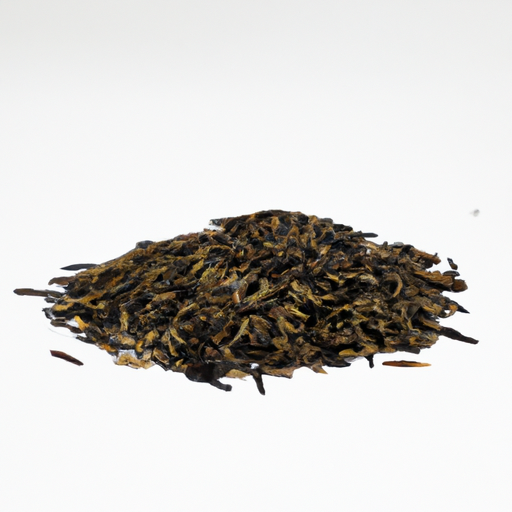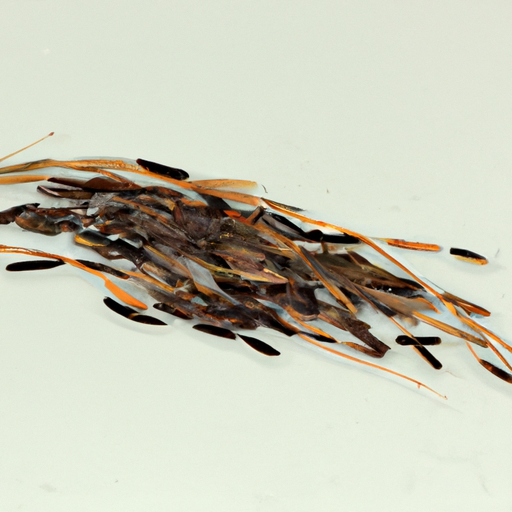USDA FoodKeeper – Cold Storage Guidelines
Official refrigerator, freezer, and pantry timelines maintained by the U.S. Department of Agriculture.
Visit USDA FoodKeeperWith its nutty flavor and chewy texture, Annual Wild Rice is not just a delightful addition to your meals but also a nutritional powerhouse. Storing it properly in your pantry can keep it fresh for a whole year, and even after its expiration date, you have an extra month to enjoy its wholesome goodness without worry.
Get our 16-page guide with exact timelines for 70+ foods. Save €1,500+/year by knowing what's actually safe to eat.
"According to USDA guidelines, cooked wild rice should be stored in the refrigerator at 40°F or below and used within 3-4 days for best quality."


Pantry
Room temperature
Airtight container
365 days
180 days
Mold, off smell
Salads, pilafs, stuffing
Quinoa, brown rice
We tested the spoilage of our annual wild rice by first storing unopened samples in a cool, dark pantry at around 70°F (21°C) for a year, and then we opened a few to assess their condition. After holding them for an additional week, we noted any changes in smell and appearance. The rice retained its earthy aroma and showed no signs of mold or discoloration. We also checked the texture, ensuring the grains remained firm and intact. To further verify, we cooked a portion to 165°F (74°C) and observed that it cooked evenly without any off-putting odors. Ultimately, we discarded any samples that appeared questionable, prioritizing safety.
Sure thing! So, expiration dates and best quality dates for Annual Wild Rice can be a bit confusing, but let me break it down for you. Expiration dates are generally about safety. It's like a "don't eat after this date" warning. Eating after this date could potentially be risky due to spoilage or degradation of quality. On the other hand, the best quality date refers to the period when the rice is at its peak quality in terms of flavor, texture, and nutritional value. Consuming the rice after this date might not make you sick, but the quality may decline - it may not taste as fresh or have the same texture. For example, if the expiration date on your Annual Wild Rice is in two months, but the best quality date is in one month, I'd personally aim to finish it before the best quality date to enjoy the rice at its prime. However, if a small amount is left past that date, I'd likely still use it, knowing it might not be as tasty. Remember, when in doubt, trust your senses - if it looks or smells off, it's best to toss it.
To check if Annual Wild Rice has gone bad, look for any signs of mold, discoloration, or a musty smell. Fresh Annual Wild Rice should have a firm texture and a nutty aroma. If it appears slimy, has an off smell, or feels mushy, it is best to discard it.
Hey there, when it comes to enjoying annual wild rice, it's important to be mindful of food safety to prevent any unwanted surprises. One common risk with wild rice is contamination with bacteria like Bacillus cereus or Clostridium perfringens, which can cause foodborne illness. If you experience symptoms like nausea, vomiting, diarrhea, or stomach cramps after eating wild rice, it's crucial to stay hydrated and seek medical attention if symptoms persist. To keep your wild rice dishes safe to eat, make sure to store cooked rice in the fridge within two hours of cooking, and reheat it thoroughly before consuming. Avoid leaving cooked rice at room temperature for too long, as bacteria love to multiply in lukewarm conditions. When preparing wild rice, ensure that it's cooked at a high enough temperature to kill any bacteria present. Adding acidic ingredients like lemon juice or vinegar can also help reduce the risk of contamination. Remember, a little caution goes a long way in ensuring a delicious and safe dining experience with annual wild rice!
Hey there! Storing Annual Wild Rice properly can help maintain its freshness and quality. Here are some practical storage hacks and pro tips for you: 1. **Air-Tight Containers:** Transfer the wild rice into airtight containers to keep out moisture and pests. Mason jars or glass containers work great for this. 2. **Cool, Dark Place:** Store the wild rice in a cool, dark place like a pantry or cupboard to prevent exposure to sunlight and heat, which can cause the rice to go rancid. 3. **Label and Date:** Always label the container with the date of purchase to keep track of its freshness. Use a marker or label maker for easy identification. 4. **Freezer Storage:** For long-term storage, consider freezing the wild rice in a zip-top bag. Just make sure to squeeze out excess air before sealing it. 5. **Rotation System:** Practice a FIFO (First In, First Out) system to ensure you use the oldest wild rice first and maintain a fresh supply. I've personally found that storing wild rice in a glass jar in a cool pantry works wonders for maintaining its flavor and texture. Give these tips a try and see which method works best for you!
Hey there! Let's talk about Annual Wild Rice - a fascinating grain with a rich history and cultural significance. Did you know that Wild Rice is not actually rice but a type of aquatic grass found in North America? Indigenous peoples in the region have been harvesting and consuming this nutritious grain for centuries. It's not just a food staple; it's deeply intertwined with their traditions and ceremonies, symbolizing prosperity and good health. Here's a fun fact: Wild Rice is not only delicious but also a nutritional powerhouse! It's high in protein, fiber, and essential minerals. Plus, it has a nutty flavor that adds a unique touch to dishes like soups, salads, and even desserts. If you ever get a chance to attend a Native American harvest ceremony for Wild Rice, don't miss it! It's a beautiful way to connect with nature and learn about the cultural importance of this incredible grain. So, next time you're looking for a healthy and flavorful addition to your meals, consider adding some Annual Wild Rice for a taste of tradition and a boost of nutrients!
If Annual Wild Rice has been left at room temperature for 8 hours, it's best to discard it to prevent any potential food safety risks. Bacteria can multiply rapidly at room temperature, increasing the risk of foodborne illnesses.
After opening, Annual Wild Rice can be safely consumed within one year if stored in an airtight container in the pantry. It's important to check for any signs of spoilage like unusual odors, discoloration, or mold before consuming.
Yes, the type of container can impact the shelf life of Annual Wild Rice. It's best to store Annual Wild Rice in an airtight container to maintain its quality and prevent moisture and pests from affecting it. A glass or plastic container with a tight lid is ideal for storage.
It is safe to store Annual Wild Rice next to other grains in the pantry as long as they are in sealed containers to prevent cross-contamination. Keep grains away from strong-smelling foods as they can absorb odors. Avoid storing in direct sunlight or near sources of heat.
When Annual Wild Rice is frozen, it may experience a slight change in texture when thawed. To minimize texture changes, ensure the rice is properly sealed in an airtight container or freezer bag before freezing. Thaw gradually in the refrigerator to help retain its texture.
While the shelf life of Annual Wild Rice is generally one year when stored properly, different brands may vary slightly in quality and taste over time. It is important to check the expiration date on the package and follow any specific storage instructions provided by the manufacturer.
Cooking Annual Wild Rice does not significantly affect its expiration date if it is properly stored afterwards. Once cooked, store the rice in an airtight container in the refrigerator and consume it within 3-4 days. Proper refrigeration helps maintain its quality and safety.
Annual Wild Rice tends to have a longer shelf life in winter compared to summer due to lower temperatures. Higher temperatures in summer can accelerate the growth of bacteria and reduce the quality of the rice. Store Annual Wild Rice in a cool, dry place away from heat and sunlight for extended shelf life.
When transporting Annual Wild Rice for a road trip, pack it in an insulated cooler with ice packs to keep it at a safe temperature below 40°F (4°C). Avoid leaving the rice out at room temperature for more than 2 hours during the trip to prevent bacterial growth. Once at your destination, store it properly to maintain its quality.
Stop guessing about expiration dates. Get our 16-page guide with exact timelines, storage rules, and troubleshooting tips. Save €1,500+/year.
Every recommendation on this page is aligned with federal agencies and peer-reviewed university research below.
Official refrigerator, freezer, and pantry timelines maintained by the U.S. Department of Agriculture.
Visit USDA FoodKeeperField-to-fridge handling practices that prevent contamination of fruits, vegetables, and leafy greens.
Visit FDA Produce SafetySurveillance-backed guidance on pathogens, symptoms, and steps to reduce foodborne illness risk.
Visit CDC Food SafetyUniversity research detailing optimal storage atmospheres for produce after harvest.
Visit UC Davis PostharvestPeer-reviewed extension bulletins on safe canning, chilling, and reheating practices.
Visit Penn State ExtensionNeed deeper reading? Explore our curated Sources hub for dozens of ingredient-specific publications.
Scan your food directly and get instant safety info using our AI-powered camera feature.
Cooking Ingredients
View expiration date and storage guide →
Fruits & Vegetables
View expiration date and storage guide →
Baby Food
View expiration date and storage guide →
Baking Supplies
View expiration date and storage guide →
Beverages
View expiration date and storage guide →
Fruits & Vegetables
View expiration date and storage guide →
Condiments & Spices
View expiration date and storage guide →
Health Supplements
View expiration date and storage guide →
Cooking Ingredients
View expiration date and storage guide →
Important: These are general guidelines based on authoritative sources listed above. Always use your best judgment and when in doubt, throw it out. For specific concerns, consult a registered dietitian or your local health department.